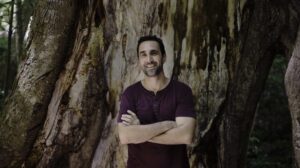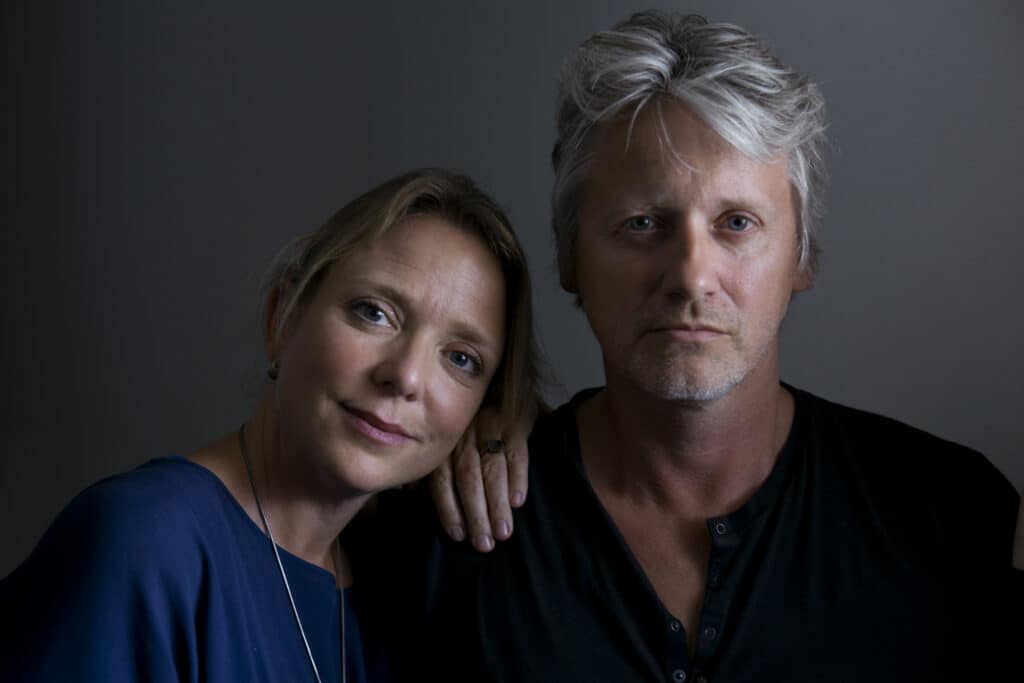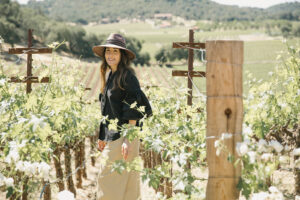
Masaya Co — Sustainable Furniture from Seed to Seat
MasayaCo is a sustainable furniture company on a mission to combat climate change through reforestation & sustainable design.
South Africa
Mood of Living April 10, 2019
The Guild Group, a South African furniture and export company owned by Trevyn and Julian McGowan, is known for its unique designs that take cues from the backgrounds of their award-winning artisans. Within the company is an agency for the representation of South African contemporary design called Source. Source facilitates the majority of design and craft exports worldwide while offering a service to clients ‘from sourcing, development, logistics and financial management to ‘design under license’ programs.’ Remarkable in how South African culture shines through in every product, alongside the way in which the company features artists from all walks of life, the McGowans are the innovative brains behind The Guild Group. Under their leadership, the company has brought otherwise unrecognized pieces to the international stage. Trevyn and Julian have also added Southern Guild, a design gallery ‘representing locally made collectible design in Africa’, to their already large list of achievements.

Mood of Living: Where did you grow up? Where did you go to school?
Trevyn McGowan: I grew up in Johannesburg, and went to Saheti School.
Julian McGowan: I grew up in Leigh near Manchester in the UK, and went to Leigh Church of England Secondary School.
MoL: I understand you both worked many years in design before you started Source. Where did you work beforehand? What influenced you to start your own business?
T.M: I had an interiors and architectural practice called Site Specific in London. With my background as an actor in the theatre, many of my clients were famous actors. We offered a comprehensive turnkey service. I had been living in London for 22 years. I sourced homeware for private clients from South Africa and kept up to date with what was happening here, so I came to Source with a strong understanding of what clients wanted and what the opportunities were. We have both always worked for ourselves. What prompted us to start these businesses was an understanding that what was happening here wasn’t happening anywhere else and that a conduit was needed to frame it, help establish it and take it to the world.
J.M: I trained as a set designer at Central Saint Martins and worked for 22 years on theatre productions all over the world, premiering new work at the Royal Court and the National Theatre. The world of set design is experimental, fast-paced, creative and constantly requires originality and newness. The two of us brought these two parts together, which created a good partnership that allowed for different strengths.
MoL: For the readers who may not be familiar with Source, can you please explain what your business does and what is unique about it?
T.M: Source supplies the most distinctive international stores with fresh and authentic artisanal homeware from Southern Africa. We curate from over 150 artists, crafters and manufacturers, across dozens of techniques and materials, to present contemporary assortments that are handmade, high quality and unique, focusing on recycled and eco-conscious production wherever possible. We are the primary agency for the representation of South African design, facilitating the majority of design and craft exports worldwide and offering a turnkey service to clients from sourcing, development, logistics and financial management to ‘design under license’ programs. There is no other company offering all these services in our region.
MoL: Who are your customers? Where do they live? What do they appreciate about the art you sell?
T.M: For Source, our customers are retailers all around the world, including iconic stores such as The Conran Shop, Liberty, Anthropologie, ABC Carpet and Home, West Elm, Restoration Hardware, Williams Sonoma, as well as smaller boutiques. We offer them access to artisans, crafters and design studios that might otherwise be inaccessible. We also offer a curated assortment and a trouble-free supply chain.
J.M: For Southern Guild, just over half of our clients are international and are spread all over the world from Dubai to Sydney to Miami to Cologne. The rest are South African. The international buyers are either tourists who walk into our gallery or collectors who have seen us at a design fair. They all instinctively respond to the work on an emotional, intellectual and physical level as South African design is rich in narrative, handmade and totally unlike anything they’ve seen before. Our artists have a deep connectivity to their chosen materials and the natural world that surrounds them in Africa. Each has a distinctly unique viewpoint, conveyed through the works and the stories they tell.
MoL: What was your goal initially when you started Source? How are you giving back to your community and local artisans? How do they give back to you? Would you say you are a socially and environmentally conscious business, and if so how?
T.M: When we started Source, it was to share with the world what we truly believed to be authentic, original and globally relevant craft and design being made here in South Africa. All our artisans at Source and Southern Guild work by hand. They have a huge focus on recycling and sustainable production methods. We personally know each company we work with and their methodology, which is all about caring for their workers, social development and economic upliftment.
J.M: The same applies for Southern Guild but in addition, because it focuses on collectible design, buyers know they are investing in something that will become an heirloom, so it’s not a disposable item. They have the authenticity of owning work where they know who made it. When you buy something from a mass-market retailer, you have no idea who made it. We are humanizing design. The gallery also chooses to work only with collaborators and artists who have a shared vision. So, for example, Porky Hefer’s Endangered collection of sculptural seats came about as a result of Schiff Fine Art Advisory in New York approaching us to collaborate on a project that would benefit conservation programs run by the Leonardo DiCaprio Foundation. It was very important that our production methods and materials reinforce the message of conservation so we worked hard with Porky to find ways of using only sustainable materials. In our particular context in South Africa, where vegan leathers are simply not an option, this meant using salvaged fabrics, eco-friendly felted wool and collaborating with craft groups that do incredible social upliftment work.

MoL: As the founders of Southern Guild, one of the most prominent design galleries in South Africa, what was the decision behind starting the gallery?
J.M: We are actually the only collectible design gallery in South Africa! We started it with the desire to provoke local designers to make their wildest, most ambitious work. We wanted to give them a platform that would elevate their work by taking it into the collectible sphere. 10 years later, we are more committed than ever to this rigorous articulation of the creative minds we work with. We are always trying to draw their best work out of them and help them articulate their vision and narrative, pushing them further than they would go.
MoL: How do you select the artisans that you represent? Do you consider the designers manufacturing process and if they are themselves socially and environmentally conscious? What is it about these artists that draw you?
T.M: We choose artists that excite us. They could be working in other disciplines such as fashion or textiles and then we’ll work with them to apply their vision and approach to collectible furniture.
J.M: It is important that we don’t have duplication in materials, manufacturing processes and ideas among the artists we work with. We are looking for variety, and most importantly, for the very best proponents of each particular craft or design language as well as those with something different to say. So, if we work with a blacksmith, it must be the best one.
MoL: What drew you to the designer Adam Birch? His transition from tree climber to tree surgeon, now to craftsman focusing exclusively on wood works, is a fascinating story. How would you describe his art?
T.M: He has an extraordinary, artistic eye and almost alchemic way of working with wood. He knows the trees he works with intimately as he has often cut them down himself, section by section. He realized that the tree fork, where the bifurcation happens, has almost a cosmic energy in that split, and it’s that energy that he’s working with.
J.M: There’s a poetic quality to his work. Adam was one of the first artists we started selling internationally because people recognized that nothing like these fork sculptures existed anywhere else.
MoL: Andile Dyalvane, another one of the artists you represent, was nominated as one of the Top 10 Contemporary Artists Working with Ceramics by Artsy. How has his background and culture influenced his design and art? Where did he learn his craft and where does he source his materials?
T.M: Andile has a deep spiritual calling to preserve and pay tribute to his Xhosa culture. It infuses everything he does. His most recent body of work, Idladla, meaning “grain silo/storage structure” in isiXhosa, is centered on the pivotal role that the cultivation, storage and use of maize plays in rural Xhosa life. In the total Eastern Cape, where he grew up, a home is incomplete in the absence of a grain and maize storage structure. What completes the family, homestead and community are those life-sustaining activations of collective effort and restorative spirituality through land cultivation. Each piece in the Idladla collection pivots around these efforts and their meaning and memory.
J.M: He mixes his own clay, looking for textures and qualities that are aligned with what he’s trying to achieve.
MoL: How did Hamed Outtara’s background, another artist you represent, influence his work? Where is he from and what inspired him to work with salvaged metal to create art? What about his art appeals to you?
T.M: Working in Burkina Faso, where constant power outages are the norm, and equipment is difficult to procure, all hinges, nails and tools necessary for each piece are crafted in-studio, meaning that every detail is carefully considered and utterly bespoke. He makes his pieces from disused oil barrels, hammered, shaped and repurposed by hand, turning the salvaged metal into a functional, artistic homeware product.
J.M: What’s extra ordinary about him is that he has to create his materials and componentry before he can even create his work. He achieves such purity of form from a material with humble origins, and considers color very sensitively in his work. On top of that, his pieces are cleverly constructed. The legs on his tables break apart and can fit inside the larger pieces for easy packaging. These are things he has to bear in mind because of the challenges of shipping from Burkina Faso. He is an elegant problem solver with an exquisite eye.
MoL: How has the South African culture influenced the way you think of the world and how you live? You’re from London, and such a dramatic change in scenery and culture must have affected you in some way. Do you consider South Africa more of a home now than England?
T.M: I have spent just over half my life in South Africa and whilst it was very invigorating and stimulating to live in the UK, we both feel more at home here. Our higher purpose is here, and we have a commitment that is inextricably linked to this country. Where others may be more focused on the complications and issues, we are inspired by South Africa and have great faith in the future of the country because we see it through the eyes of our artists and the audience, who sense the pulse of something different.
MoL: How has your life changed since living in South Africa? How has your lifestyle transformed? Does your home have a look and feel that is different from your home in London? If so, how? Do you live with the work you exhibit?
T.M: In London, we lived in Clerkenwell in a 3-story building. We worked on the ground floor and lived upstairs. Now we live in a 1947 Georgian inspired homestead in Constantia, a semi-rural suburb of Cape Town, that opens out onto a massive garden surrounded by trees and rivers. The start of our day begins outside with a run or a walk on the green belt of Constantia. It’s a bit of a drive into the city center, but it’s worth it because we have a lot of children and we get to encompass a larger world and have a lot of people in our house at any time.
J.M: We don’t distinguish between our home and the gallery at all. They both flow from the same impulse of wanting to be thrilled and challenged by what we see, and take shape through a slow and steady accumulation of work. Our home illustrates our journey in life and design, and is deeply eclectic; a mix of antiques handed down from Trevyn’s parents, contemporary design and pieces with sentimental value. We have been collecting for 30 years so it’s very layered and personal. With the exception of the antiques, we know every person who made each piece. Every object has a narrative and a memory behind it. We are also not precious, we have rambunctious children and boisterous pets, so when things get broken we just glue them back together! We are both deeply attached to the home and everything that is in it.
MoL: Has your palate changed since living South Africa? Are there any South African recipes you would like to share? What do farmers grow that you enjoy and are particular in your region?
T.M: We’re even more in love with fresher seasonal flavors since moving here, but the whole world has moved that way anyway. Food is very important to us. We have family meals every single day.
J.M: We are both foodies and both cook organic vegetables, free-range meat, simple homely food. Cape Town has phenomenal restaurants on a global standard at a tenth of the cost so we also eat out a lot.
MoL: Do you see a synergy in the food, wine, and art industries as it is elsewhere? Is there a cultural interest in sustainability? If so, why?
T.M: Yes, we work closely with many local wine and food producers to host dinners in the gallery and conceptualize unusual events such as Krone, which makes MCC and wine; Hope on Hopkins artisanal gin and many others. The food and art and design worlds here are intimately connected. We all consider ourselves part of the creative landscape in this country.
J.M: The restaurants are very visual, and often spectacularly situated in outdoor locations. The growing number of art galleries and museums here is tied to the increasing number of restaurants and hotels, which all makes it so interesting to visit South Africa. Wolfgat in the West Coast town of Paternoster was named the Best Restaurant in the World at The World Restaurant Awards in Paris in February 2019.
MoL: Where do you go for peace of mind?
T.M: The river trail behind my house, where I like to run.
J.M: My garden.
MoL: What’s an insight you’ve gained from starting Source and Southern Gallery?
T.M: Be true to yourself.
J.M: Stories matter.
MoL: Do you have any advice for our readers who are inspired by your accomplishments and who want to create their own businesses – in particular those who want to support local art and artists?
T.M: Find your own voice. What are you going to do differently that no one else is already doing? What are you going to add to the landscape? It needs to be pure but it must be needed. Look around for the gap and follow your passion within that space.
J.M: Always strive for excellence. Set high standards and don’t waiver from that, be in relentless pursuit of that. If you are aligned on all levels with this driving force, people will start to understand what you are trying to do.
Photography courtesy of Trevyn and Julian McGowan. Photos of the McGowan home courtesy of Greg Cox for Bureaux.

MasayaCo is a sustainable furniture company on a mission to combat climate change through reforestation & sustainable design.

April Gargiulo founded the sustainable skincare brand Vintner’s Daughter on principles of efficacy and sustainability.

Founder Treana Peake, supports artisan partnerships and funds development work through the Obakki Foundation.